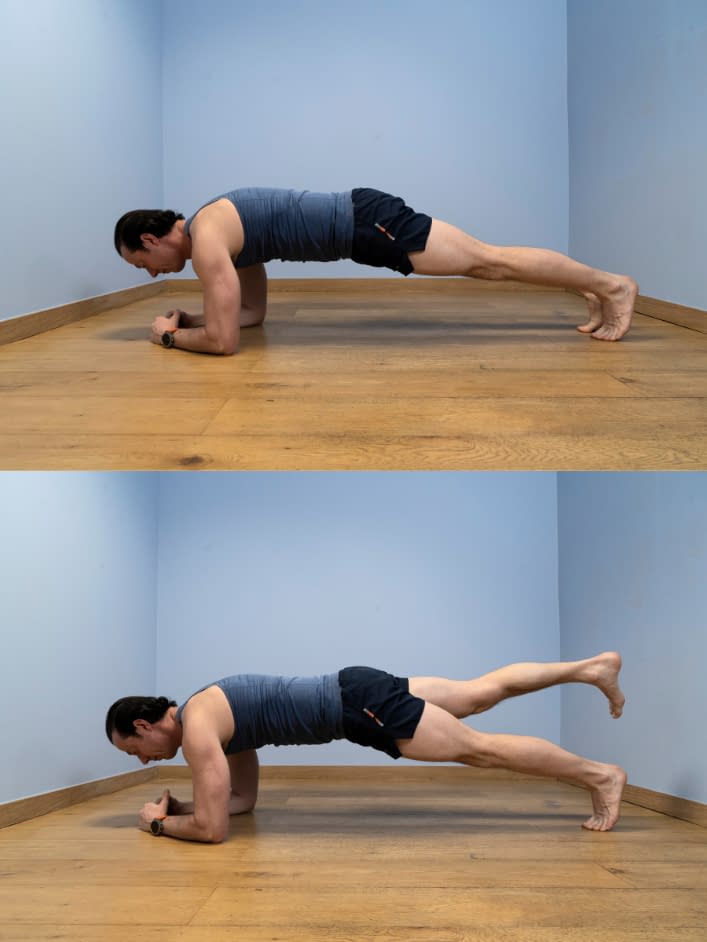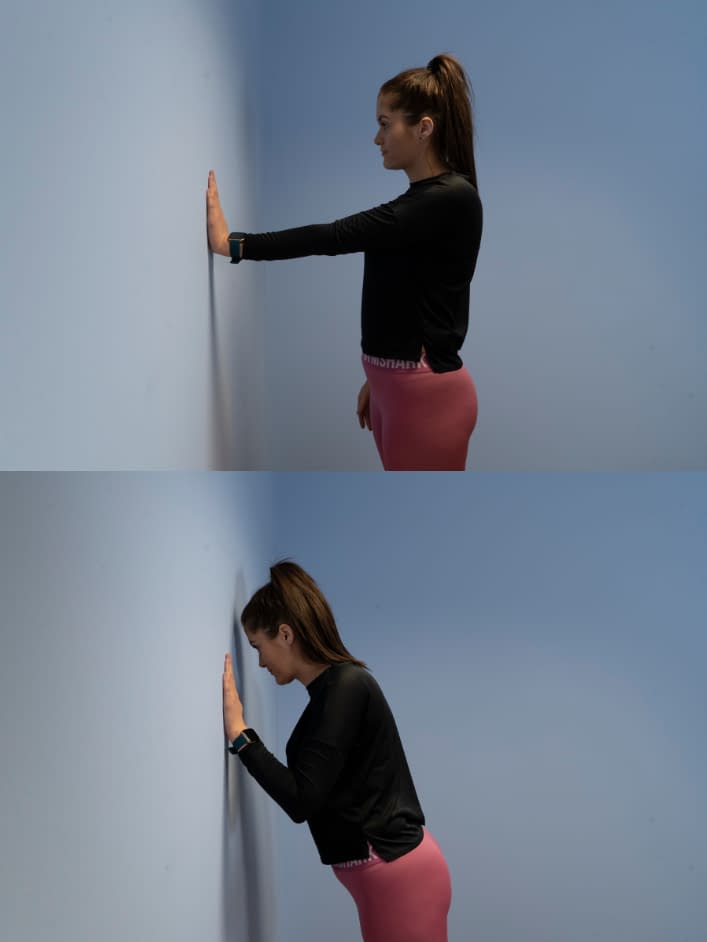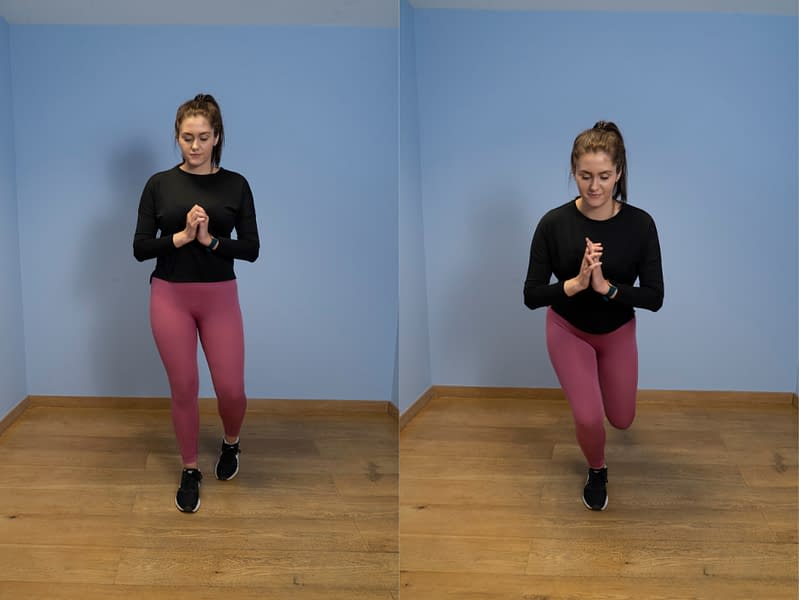Benign Joint Hypermobility Syndrome Advanced Exercise Programme
Aim to perform this programme a minimum of once per day unless prescribed otherwise. As with any new exercise, start slowly (repetitions as able) and build up as you are able within the guidelines below.
Pain should not exceed 2/10 whilst completing this exercise programme.
1. Plank with leg lift
- Lie on your front.
- Keeping your knees on the floor lift onto your elbows.
- From this starting position lift one leg 2-3 inches off the floor. Place back down and then repeat on the other leg.
- Try to keep the hips and pelvis still at all times.
- If this is too difficult you can perform the same exercise with the knees on the floor.
2. Standing single arm wall press up
- Stand approximately one small step away from the wall.
- Place one hand chest high on the wall so that your elbow is slightly bent.
- Bend your elbow to take your head and shoulders closer to the wall.
- Push against the wall to return to starting position.
3. Single leg squat with toe touch
- Start by standing with all the weight on one leg.
- Now place the other leg on the floor on the ball of the foot next to or slightly behind the standing leg.
- Begin with 60% of the weight on the standing leg and 40% on the supporting leg.
- Bend the knee and the same time bend the hip as if you were sitting back into a chair.
- Go down until the standing knee is approximately at a right angle.
- Slowly return to an upright position and repeat.
- As the exercise gets easier reduce the support on the non-standing leg.
We recommend consulting a musculoskeletal physiotherapist to ensure exercises are best suited to your recovery. If you are carrying out an exercise regime without consulting a healthcare professional, you do so at your own risk. If you have any concerns whilst completing these exercises, please contact a healthcare professional.
More Plans
This programme is aimed at helping to develop better strength and stability to reduce the effect of the condition. Pain should not exceed 2/10 on your self-perceived pain scale whilst completing this exercise programme.
- 0
- 1
- 2
- 3
- 4
- 5
- 6
- 7
- 8
- 910


